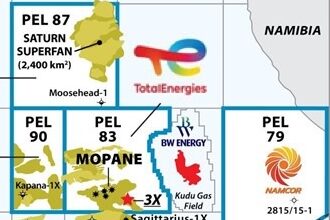Norwegian PSA tracks negative trend in attitudes toward safe lifting, urges radical change
By Kristin Hoffman, Petroleum Safety Authority Norway
Change was the winning slogan in the recent US presidential election. In the same way, a willingness to adapt and think anew is essential for reducing risk in offshore crane and lifting operations by eliminating deadly blind zones.

A recent PSA report about deadly blind zones noted that almost half of all fatal accidents in the petroleum industry relate to crane and lifting operations, or materials handling in general.
Materials handling accounts for a significant proportion of personal injuries on the Norwegian Continental Shelf (NCS). “Blind” lifts, where the crane driver cannot see the location or destination of a load, have proved a particular safety challenge.
“This is a serious issue,” said senior adviser Olav Hauso at the Petroleum Safety Authority Norway (PSA). “It’s not acceptable for routine lifting to take place in areas with blind zones.”
He emphasized that the whole industry must take the risk posed by blind lifts seriously and make a substantial commitment to developing good overall solutions.
“Rig builders and owners need to pay more attention than they do today to ensuring safe lifting. Acceptable materials handling must be incorporated at the design stage for newbuildings and when existing units are converted.
“Companies must be thorough in dealing with this problem and apply the results of materials handling analyses when designing areas for lay-down and storage.”
The PSA has recorded a negative trend in attitudes and sees the need for a radical change by the industry.
“Far too many lifts take place in blind spots on both new and older units,” said Mr Hauso. “We’re constantly seeing examples of companies who fail to give sufficient weight to safe materials handling or to comply satisfactorily with the regulatory requirements.
“Such findings emerge during our audits, when we consider applications for an acknowledgement of compliance (AoC) and when we investigate incidents and accidents.”
In a circular to owners of mobile units and fixed installations, the PSA has asked them to give special attention to risk in general and blind zones for materials handling in particular. Operators of offshore cranes and other lifting devices must have a free view of the load during routine operations, regardless of the position of either crane or load.
“The industry can get to grips with these challenges through systematic effort and collective action,” Mr Hauso emphasized, adding that the sector can also point to gratifying results.
“It’s got both experience and expertise to organise acceptable materials handling – and to plan newbuildings and modifications in such a way that blind spots can be avoided.
“We saw a marked decline in serious incidents related to offshore cranes in 2000-04. That reflected strategic commitment and a high level of activity and willingness to reduce risk.
“Such results demonstrate that purposeful efforts and collaboration can yield results – for those who want to achieve them.”
 Rig builders and owners need to pay more attention than they do today to ensuring
Rig builders and owners need to pay more attention than they do today to ensuring
safe lifting, said Olav Hauso with the PSA. Acceptable materials handling must
be incorporated at the design stage for newbuildings and when existing units are converted.
RESPONCE
The PSA has received a number of responses to an article about deadly blind zones in the latest edition of its annual “Safety – Status and Signals” publication.
This report noted that almost half of all fatal accidents in the petroleum industry relate to crane and lifting operations – or materials handling in general.
“The involvement and reactions suggest that many people see opportunities and also want to work internationally for better management and safer operations,” said Mr Hauso.
In identifying collective challenges, he called particular attention to be paid to management and control, as well as to expertise and training.
A positive trend has been seen with Norwegian and international standards for crane and lifting operations in recent years, and this was welcomed by Mr Hauso.
“Both regulations and standards represent good references for ensuring safety. The industry must now be willing to make a joint effort to ensure that materials handling in the petroleum industry does not pose an unnecessary and unacceptable risk for those involved.”




